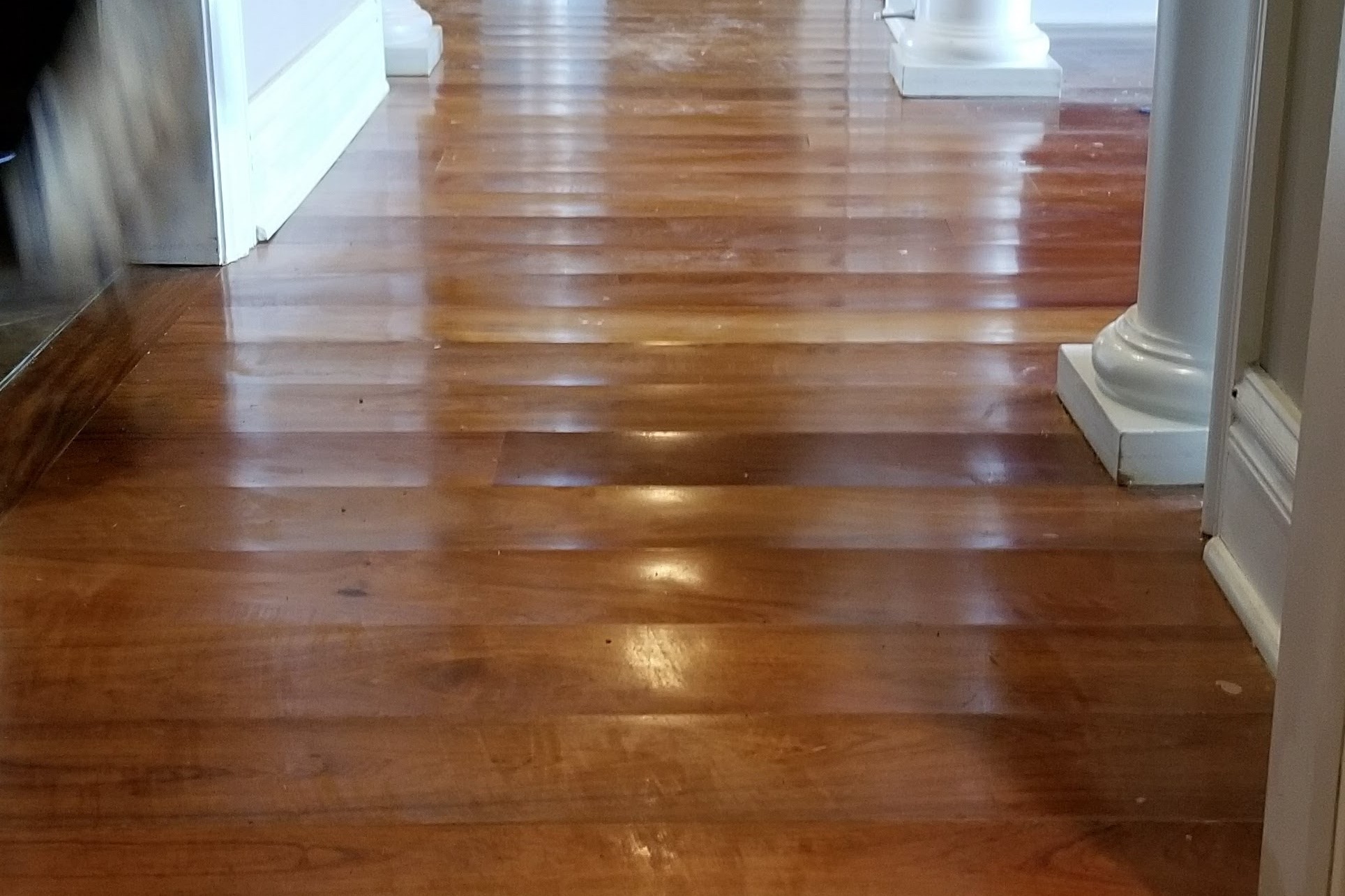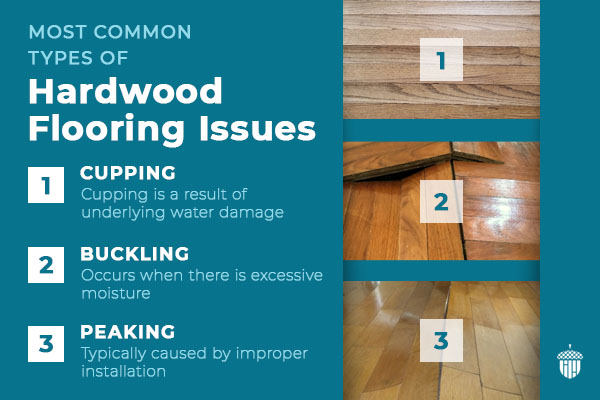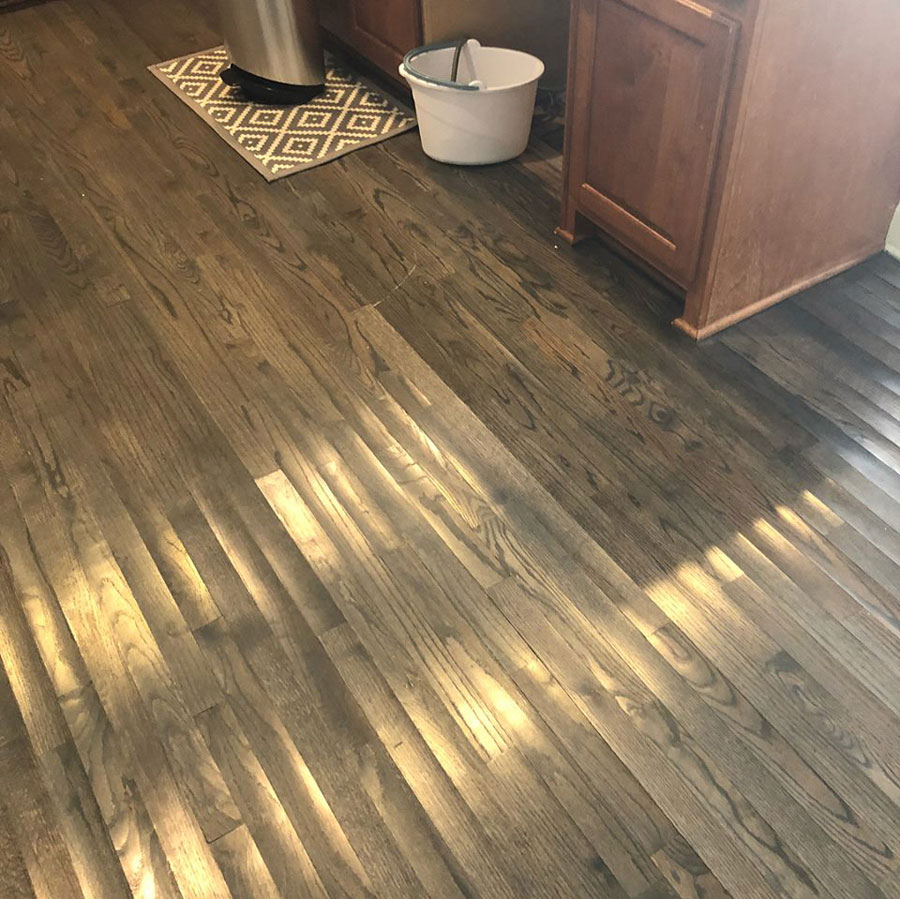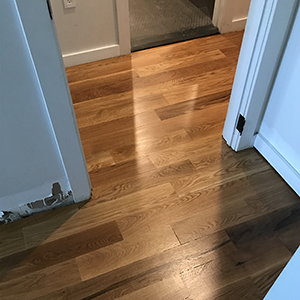Common Causes of Hardwood Floor Buckling
Moisture and Humidity: One of the most common causes of hardwood floor buckling is excessive moisture and humidity. When hardwood floors are exposed to high levels of moisture, the wood absorbs the moisture, causing it to expand and buckle. This can occur due to leaks, spills, or high humidity levels in the environment. It is important to regularly monitor the moisture levels in your home and take necessary steps to maintain them within the recommended range.
Improper Installation: Incorrect installation methods can also lead to hardwood floor buckling. If the flooring is not properly acclimated or if the subfloor is not adequately prepared, it can result in gaps or unevenness in the floorboards. Over time, this can cause the flooring to buckle and warp. It is crucial to hire a professional installer who follows the proper installation guidelines to avoid such issues.
Subfloor Issues: Problems with the subfloor can also contribute to hardwood floor buckling. Uneven subfloors, moisture damage, or inadequate subfloor ventilation can all lead to the flooring becoming uneven and buckling. It is recommended to inspect the subfloor before installing hardwood flooring and address any issues that may compromise the stability of the floor.
Changes in Temperature: Drastic changes in temperature can cause hardwood floors to expand or contract, leading to buckling. This is especially common when the flooring is exposed to direct sunlight or placed near heating vents. It is advisable to use window coverings or rugs to protect the floor from direct sunlight and maintain a consistent indoor temperature to minimize the risk of buckling.
Water Damage: Water damage, such as leaks from plumbing or appliances, can also result in hardwood floor buckling. When water seeps into the flooring, it can cause the wood to swell and warp. It is essential to address any water-related issues promptly and ensure proper drying and restoration to prevent further damage.
Poor Maintenance: Neglecting proper maintenance of hardwood floors can also lead to buckling. Failure to clean spills or excess moisture promptly, using harsh cleaning products, or neglecting regular maintenance routines can weaken the wood and make it more prone to buckling. It is important to follow the manufacturer’s recommendations for cleaning and maintenance to preserve the integrity of the flooring.
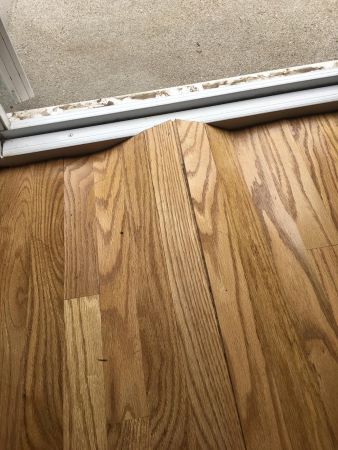
Steps to Identify and Assess Buckled Hardwood Floors
- Visual Inspection: Start by visually inspecting the hardwood floor for any signs of buckling. Look for areas where the floor appears raised or uneven. Pay attention to any noticeable gaps between the floorboards or changes in the floor’s level.
- Check for Moisture Damage: Moisture damage is a common cause of hardwood floor buckling. Use a moisture meter to identify any high moisture levels in the affected area. This can help determine if the buckling is due to excessive humidity, water leaks, or improper subfloor moisture barriers.
- Assess Subfloor Conditions: Inspect the subfloor beneath the buckled hardwood floor. Look for signs of moisture damage, such as discoloration, mold, or a damp smell. Check for any unevenness or structural issues in the subfloor that may be causing the buckling.
- Investigate Plumbing and Water Sources: If the buckling is not due to general moisture issues, inspect the surrounding plumbing and water sources. Look for any leaks or water damage in nearby bathrooms, kitchens, or utility rooms. Plumbing issues can also contribute to hardwood floor buckling.
- Consider Expansion and Contraction: Hardwood floors naturally expand and contract with changes in temperature and humidity. Assess whether the buckling is a result of inadequate expansion gaps or improper installation techniques. This can be determined by examining the spacing between floorboards and the presence of any gaps or tight areas.
- Seek Professional Help: If you are unsure about the cause or extent of the buckling or if the damage is severe, it is recommended to seek professional help. A flooring specialist or contractor can provide a more in-depth assessment and offer appropriate solutions for fixing the buckled hardwood floors.
DIY Solutions for Fixing Buckled Hardwood Floors
Identify the Cause of Buckling:
Before attempting to fix a buckled hardwood floor, it is crucial to determine the underlying cause. Common causes of buckling include moisture issues, improper installation, or subfloor problems. Identifying the cause will help in devising an effective solution.
Address Moisture Issues:
Moisture is often the primary culprit behind hardwood floor buckling. If the buckling is caused by excessive moisture, it is essential to address the source of the moisture first. This may involve fixing leaks, improving ventilation, or using dehumidifiers to control humidity levels. Once the moisture issue is resolved, the floor may gradually return to its original state.
Dry Out the Floor:
If the buckling is minor and caused by temporary moisture exposure, drying out the floor can help rectify the problem. Use fans, dehumidifiers, or open windows to increase airflow and promote evaporation. It is important to monitor the progress and ensure the floor is completely dry before proceeding further.
Reattach Loose Boards:
In some cases, buckling may occur due to loose boards. To fix this, identify the loose boards and carefully remove them. Clean the subfloor and the underside of the boards before reattaching them using screws or nails. Ensure that the boards are securely fastened to prevent future buckling.
Sand and Refinish:
If the buckling has caused the hardwood floor to become uneven, sanding and refinishing might be necessary. This process involves sanding down the buckled area to level it with the rest of the floor. Once the floor is smooth, apply a suitable finish to restore its appearance.
Consult a Professional:
If the buckling is severe or the cause is unknown, it is advisable to consult a professional. A flooring specialist can assess the problem accurately and provide expert guidance on the best course of action. They may recommend additional solutions such as replacing damaged boards or addressing underlying structural issues.
When to Seek Professional Help
Extensive or Widespread Buckling:
If the buckling of your hardwood floor is extensive or widespread, it is advisable to seek professional help. Extensive buckling can indicate a more serious underlying issue, such as moisture damage or improper installation. Professional flooring experts have the knowledge and experience to accurately assess the situation and provide the necessary solutions.
Inability to Identify the Cause:
If you are unable to identify the cause of the hardwood floor buckling, it is recommended to consult with professionals. They have the expertise to identify the root cause of the problem, which could be anything from water damage to structural issues. By accurately diagnosing the problem, professionals can implement the appropriate fix, preventing further damage and ensuring a long-lasting solution.
Insufficient DIY Repair Attempts:
If you have attempted DIY repairs for your buckling hardwood floor but the problem persists, it may be time to call in the professionals. Insufficient or improper repairs can exacerbate the issue and lead to further damage. Professionals have the necessary tools, equipment, and expertise to properly fix the buckling, ensuring a durable and seamless repair.
Health and Safety Concerns:
If the buckling of your hardwood floor poses health and safety concerns, it is crucial to seek professional help immediately. Buckling can create tripping hazards, especially in high-traffic areas. Additionally, if the buckling is due to water damage or mold growth, it can lead to health issues for occupants. Professional flooring experts can address these concerns effectively and efficiently, restoring the integrity and safety of your hardwood floor.
Warranty Coverage:
If your hardwood floor is still under warranty, it is advisable to consult with professionals for the buckling fix. Attempting DIY repairs or hiring inexperienced individuals may void the warranty, resulting in additional expenses. Professional flooring companies are equipped to handle warranty-related repairs, ensuring the problem is addressed while maintaining your warranty coverage.
Why Floors Cup and How To Fix Them – Jeffco Flooring
Buckling Hardwood Floors Above Vented Crawl Spaces Ask the Expert Lowcountry Foundation Repair
Avoid Cupping and Buckling in Hardwood Floors – Twenty u0026 Oak
Can Hardwood Floor Cupping Be Fixed? Why Does It Happen?
How To Repair Buckled Wood Floors – Hardwood Flooring Contractors
Summer Related Hardwood Floor Problems and Fixes – City Floor
The floorboards are buckling again, but were the new boards laid
Related Posts:
- Engineered Wide Plank Hardwood Flooring
- Hardwood Floor Beading
- Hardwood Floor Wax Polish
- Hardwood Floor With Marble Inlay
- Acacia Hardwood Flooring Durability
- Best Click Lock Hardwood Flooring
- Sundance Hardwood Flooring Reviews
- How To Clean A Dirty Hardwood Floor
- Hardwood Floor Gunstock Oak
- Hardwood Floor Tile Kitchen



